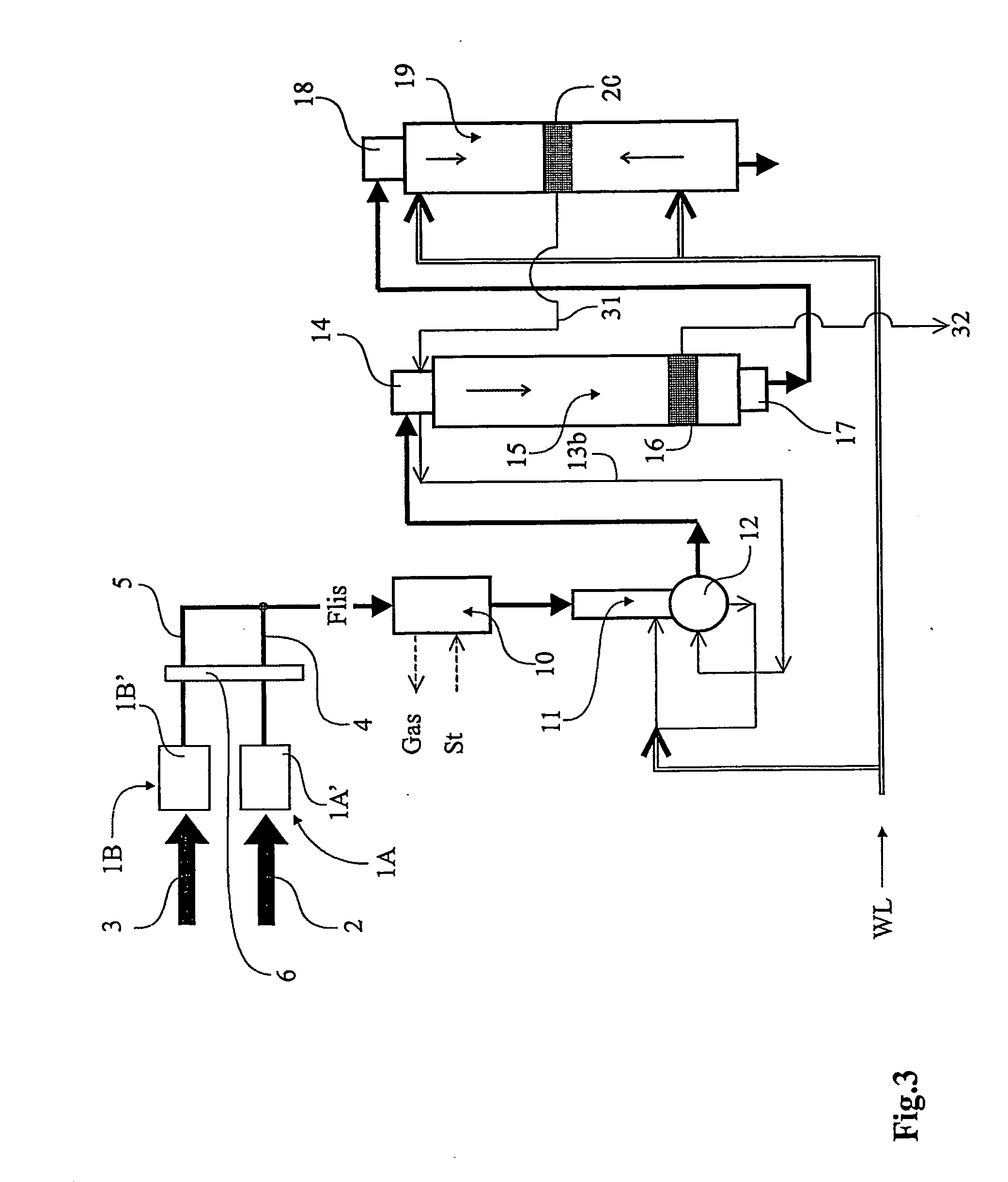Process for the manufacturing of cellulose pulp
- Summary
- Abstract
- Description
- Claims
- Application Information
AI Technical Summary
Benefits of technology
Problems solved by technology
Method used
Image
Examples
Embodiment Construction
[0018] Comparative tests have been carried out with the aim of evaluating the invention. The same cooking conditions have been used in the comparative tests and the same original material with respect to softwood has been used. A conventional method was used in one cooking experiment, whereby the wood raw material was 100% constituted by softwood. Softwood was used for 97% of the raw material in the method according to the invention, while 3% was constituted by pin chips of birch.
TABLE 1Comparison between conventional cooking and the inventionPulp:SW ConiferSW + 3% pin chipsof birchCooking run number:CK 2434CK 2439Kappa2324Viscosity, dm3 / kg:11461170Weighted mean fibre length, mm2.382.34Zero Span, Nm / g:145144Yield, %:45.746.3 (47.8)Interpolated properties at tensile strength 80 kNm / kg:Revolutions, PFI350100Slowness, ° SR:15.015.0Density, kg / m3:655655Air resistance, sec. / 100 ml:5.25.6Burst index, MN / kg:5.75.4Tear index, Nm2 / kg:17.116.0Tensile stiffness index, MNm / kg:6.56.3
[0019] As ...
PUM
| Property | Measurement | Unit |
|---|---|---|
| Temperature | aaaaa | aaaaa |
| Fraction | aaaaa | aaaaa |
| Fraction | aaaaa | aaaaa |
Abstract
Description
Claims
Application Information
 Login to View More
Login to View More - R&D Engineer
- R&D Manager
- IP Professional
- Industry Leading Data Capabilities
- Powerful AI technology
- Patent DNA Extraction
Browse by: Latest US Patents, China's latest patents, Technical Efficacy Thesaurus, Application Domain, Technology Topic, Popular Technical Reports.
© 2024 PatSnap. All rights reserved.Legal|Privacy policy|Modern Slavery Act Transparency Statement|Sitemap|About US| Contact US: help@patsnap.com










